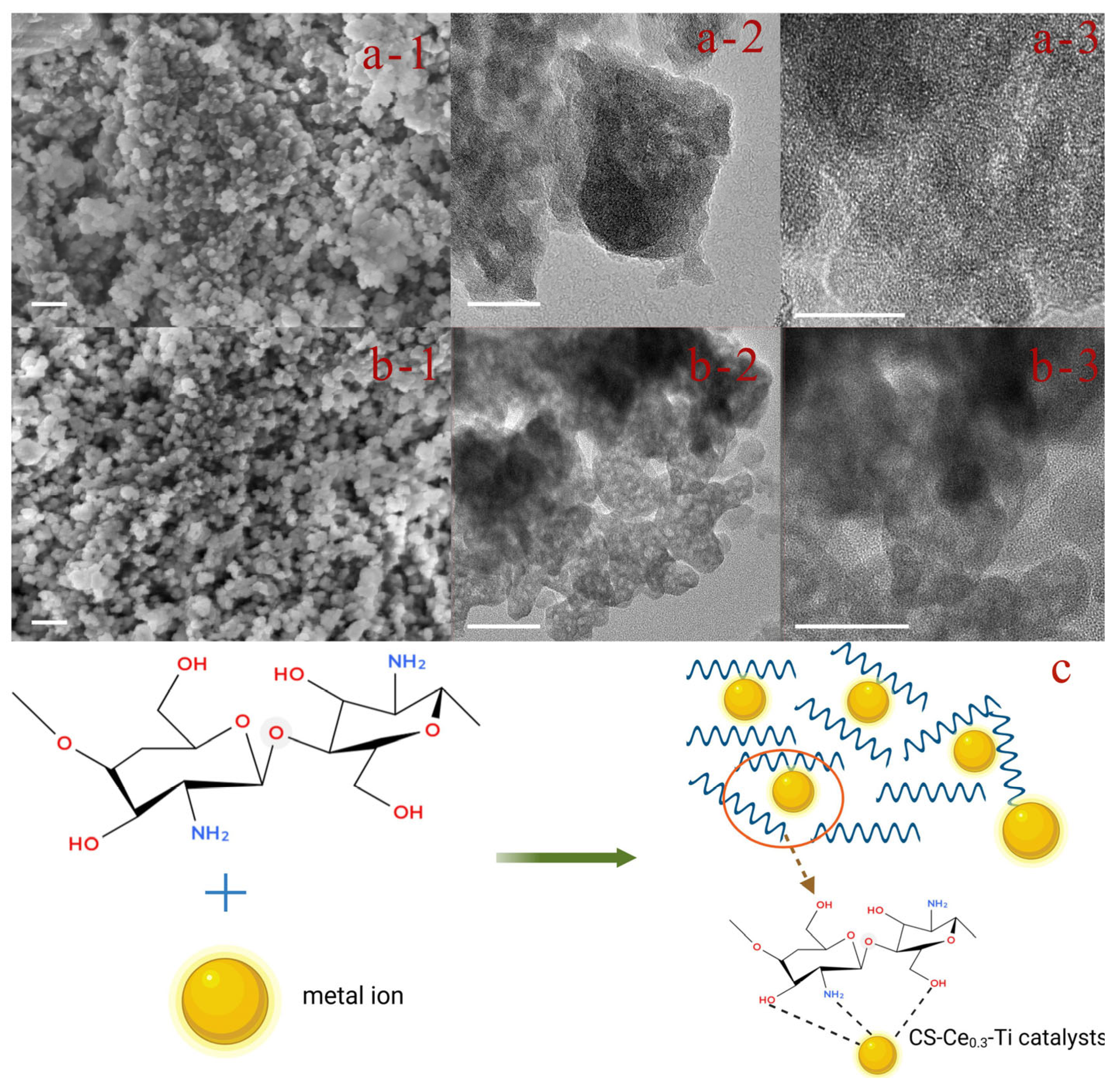Correction: Ma et al. Mesoporous Ce-Ti Catalysts Modified by Phosphotungstic Acid and Chitosan for the Synergistic Catalysis of CVOCs and NOx. Catalysts 2025, 15, 119
Reference
- Ma, M.; Zhang, R.; Shen, Y.; Zhou, X.; Zhai, Y.; Han, Y.; Wang, D.; Zhang, L.; Song, X.; Fang, D.; et al. Mesoporous Ce-Ti Catalysts Modified by Phosphotungstic Acid and Chitosan for the Synergistic Catalysis of CVOCs and NOx. Catalysts 2025, 15, 119. [Google Scholar] [CrossRef]

Disclaimer/Publisher’s Note: The statements, opinions and data contained in all publications are solely those of the individual author(s) and contributor(s) and not of MDPI and/or the editor(s). MDPI and/or the editor(s) disclaim responsibility for any injury to people or property resulting from any ideas, methods, instructions or products referred to in the content. |
© 2025 by the authors. Licensee MDPI, Basel, Switzerland. This article is an open access article distributed under the terms and conditions of the Creative Commons Attribution (CC BY) license (https://creativecommons.org/licenses/by/4.0/).
Share and Cite
Ma, M.; Zhang, R.; Shen, Y.; Zhou, X.; Zhai, Y.; Han, Y.; Wang, D.; Zhang, L.; Song, X.; Fang, D.; et al. Correction: Ma et al. Mesoporous Ce-Ti Catalysts Modified by Phosphotungstic Acid and Chitosan for the Synergistic Catalysis of CVOCs and NOx. Catalysts 2025, 15, 119. Catalysts 2025, 15, 606. https://doi.org/10.3390/catal15070606
Ma M, Zhang R, Shen Y, Zhou X, Zhai Y, Han Y, Wang D, Zhang L, Song X, Fang D, et al. Correction: Ma et al. Mesoporous Ce-Ti Catalysts Modified by Phosphotungstic Acid and Chitosan for the Synergistic Catalysis of CVOCs and NOx. Catalysts 2025, 15, 119. Catalysts. 2025; 15(7):606. https://doi.org/10.3390/catal15070606
Chicago/Turabian StyleMa, Mingyang, Ruhan Zhang, Yanan Shen, Xin Zhou, Yumeng Zhai, Yumeng Han, Dan Wang, Longjin Zhang, Xinru Song, De Fang, and et al. 2025. "Correction: Ma et al. Mesoporous Ce-Ti Catalysts Modified by Phosphotungstic Acid and Chitosan for the Synergistic Catalysis of CVOCs and NOx. Catalysts 2025, 15, 119" Catalysts 15, no. 7: 606. https://doi.org/10.3390/catal15070606
APA StyleMa, M., Zhang, R., Shen, Y., Zhou, X., Zhai, Y., Han, Y., Wang, D., Zhang, L., Song, X., Fang, D., & Gong, P. (2025). Correction: Ma et al. Mesoporous Ce-Ti Catalysts Modified by Phosphotungstic Acid and Chitosan for the Synergistic Catalysis of CVOCs and NOx. Catalysts 2025, 15, 119. Catalysts, 15(7), 606. https://doi.org/10.3390/catal15070606





